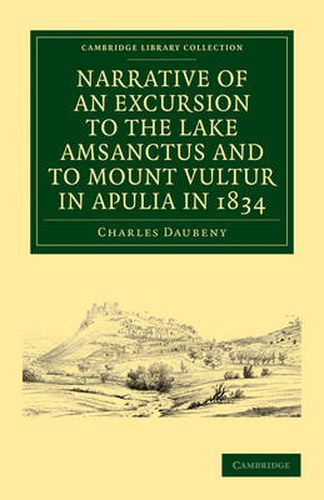Readings Newsletter
Become a Readings Member to make your shopping experience even easier.
Sign in or sign up for free!
You’re not far away from qualifying for FREE standard shipping within Australia
You’ve qualified for FREE standard shipping within Australia
The cart is loading…






This short but distinctive paper was published in 1835 by Charles Daubeny (1795-1867), who began his career as a physician but soon found his passion to be volcanos. At this time, Daubeny held chairs in chemistry and botany at Oxford. He had made many field trips to European volcanic regions between 1819 and 1825, was elected a Fellow of the Royal Society in 1822, and in 1826 published the first edition of his famous Description of Active and Extinct Volcanos, of which a later version also appears in this series. Here Daubeny describes a winter trip to the Apulia (Puglia) region in the south-east of Italy, rarely described by travel writers of his time, to visit Lake Amsanctus, famously mentioned by Virgil, and the extinct volcano Mount Vultur. Although Daubeny’s overall focus is scientific, his account also includes lively descriptions of classical remains and rural society in southern Italy.
$9.00 standard shipping within Australia
FREE standard shipping within Australia for orders over $100.00
Express & International shipping calculated at checkout
This short but distinctive paper was published in 1835 by Charles Daubeny (1795-1867), who began his career as a physician but soon found his passion to be volcanos. At this time, Daubeny held chairs in chemistry and botany at Oxford. He had made many field trips to European volcanic regions between 1819 and 1825, was elected a Fellow of the Royal Society in 1822, and in 1826 published the first edition of his famous Description of Active and Extinct Volcanos, of which a later version also appears in this series. Here Daubeny describes a winter trip to the Apulia (Puglia) region in the south-east of Italy, rarely described by travel writers of his time, to visit Lake Amsanctus, famously mentioned by Virgil, and the extinct volcano Mount Vultur. Although Daubeny’s overall focus is scientific, his account also includes lively descriptions of classical remains and rural society in southern Italy.